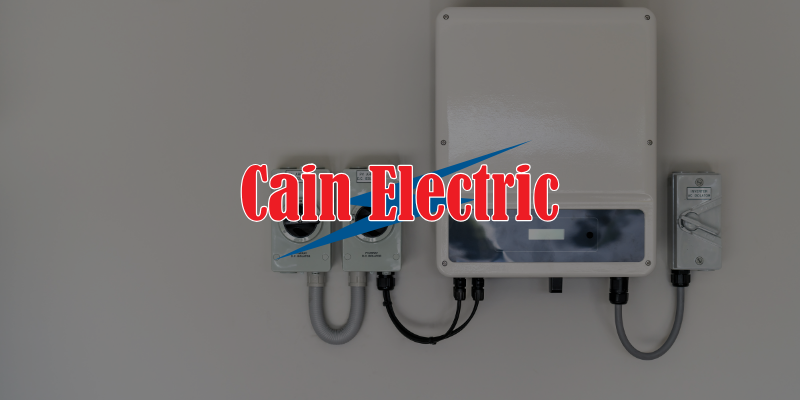
Seasonal Electrical Maintenance Checklist for Missouri Homes
Introduction
Missouri’s weather swings from ice storms in January to triple-digit heat in August, and that volatility puts extra stress on a home’s electrical system. Expansion and contraction, moisture intrusion, and heavy storm loads can loosen connections, corrode metal parts, and trip protective devices. A simple checklist, broken down by season, keeps small issues from turning into costly hazards. Use the tasks below as a preventative roadmap, or print the list and place it in a home-maintenance binder so nothing gets missed.
Spring Checklist – Reawaken Your System After Winter
Test All GFCI and AFCI Devices
Press the test and reset buttons on every ground-fault and arc-fault breaker or receptacle. Replace any unit that fails to reset or feels warm to the touch.
Inspect Outdoor Outlets and Covers
Missouri’s freeze-thaw cycles often crack plastic “in-use” covers. Swap damaged lids and verify that each receptacle is still weather-resistant and tamper-resistant.
Check Extension Cords for Yard Equipment
Look for nicks, flat spots, or repaired splices on cords used for trimmers, blowers, and power washers. Replace worn cords instead of taping over damage.
Clean Dryer and Bath-Fan Vents
Lint clogs raise outlet temperatures and overload motors. Disconnect the dryer duct, vacuum it, and confirm the exterior flap moves freely.
Schedule Panel Torque Check
Hire a licensed electrician to tighten lugs and breakers to manufacturer specs. Loose lugs cause arcing and premature breaker trips.
Summer Checklist – Beat the Heat and Thunderstorms
Inspect Service Mast and Weatherhead
Summer winds can strain the point where utility lines meet the house. From the ground, look for frayed drip loops or cracked insulators, then call the utility if repairs are needed.
Verify Surge Protection
Thunderstorm season peaks in July. Confirm that the whole-home surge protector’s indicator light is green. Replace units that show red or no light at all.
Clean and Shade Outdoor Panels
Dust and direct sun raise temperatures inside meter-combo panels. Lightly brush away debris and consider installing a shade awning that does not block utility access.
Test Ceiling-Fan Direction
Flip the fan switch to counter-clockwise to create a cooling breeze. High ambient temps make motors work harder, so tighten blade screws and listen for wobble.
Check Pool and Hot-Tub Bonding
Use a multimeter to verify that metal ladders, handrails, and pumps share a low-resistance bond. Poor bonding can energize water and create shock risk.
Fall Checklist – Prepare for Cold and Wind
Inspect Attic Wiring
Rodents seek warm shelter when temperatures drop. Look for chewed NM cable or disturbed insulation around recessed lights and junction boxes.
Clean Gutters Near Service Drops
Wet leaves hold moisture against siding and conduit. Clear gutters so water does not back up around the service mast flashing.
Replace Outdoor Bulbs with LED
Shorter days mean lights stay on longer. Swap high-wattage halogens for energy-saving LEDs and verify that fixtures are rated for enclosed or damp locations.
Label Main Disconnects
Power outages rise during fall windstorms. Use durable labels on the main breaker and any generator interlock so family members can shut power off quickly.
Schedule Backup-Generator Tune-Up
Run the generator under load for at least twenty minutes, change the oil, and replace filters. Confirm automatic transfer switches exercise correctly.
Winter Checklist – Stay Safe When Ice and Snow Arrive
Check Space-Heater Circuits
Portable heaters draw up to 1,500 watts and should plug directly into dedicated 15- or 20-amp outlets. Never use extension cords; inspect cords for Warm spots after ten minutes of use.
Examine Outdoor Holiday Lighting
LED strands reduce load, but connections exposed to snow can still short. Use GFCI-protected circuits, weatherproof connectors, and timer controls to prevent overheating.
Seal Penetrations Around Conduit
Cold air infiltration at meter bases and panel knockouts raises heating costs and adds moisture. Apply non-hardening caulk or expanding foam rated for electrical boxes.
Test Smoke and CO Alarms
Low winter ventilation increases carbon-monoxide risk. Press test buttons, replace batteries, and vacuum detector grilles to remove dust.
Monitor Ice Dams Near Service Entrance
Ice buildup can push shingles upward and drip onto wiring hidden behind fascia boards. Gently remove snow with a roof rake before dams form.
Year-Round Quick Checks
- Monthly: Review utility bills for unexplained usage spikes that may signal hidden faults.
- Quarterly: Scan breaker panel for scorch marks, rust, or buzzing sounds.
- Annually: Pull permits and schedule professional infrared scans on older homes to detect hot spots inside walls.
- Any Time: Call an electrician if lights dim when an appliance starts, breakers trip repeatedly, or you smell burning plastic.
Conclusion – Small Steps, Big Payoffs
Following a seasonal routine keeps Missouri homes safer, appliances running longer, and energy costs in check. Setting reminders on a phone calendar or printing this list helps turn good intentions into action. When a task involves the main panel, hard-to-reach wiring, or anything you are uncomfortable handling, play it safe and bring in a pro.
Cain Electric serves homeowners in Washington, Union, Pacific, and nearby towns with affordable inspection and maintenance services.






































